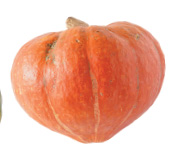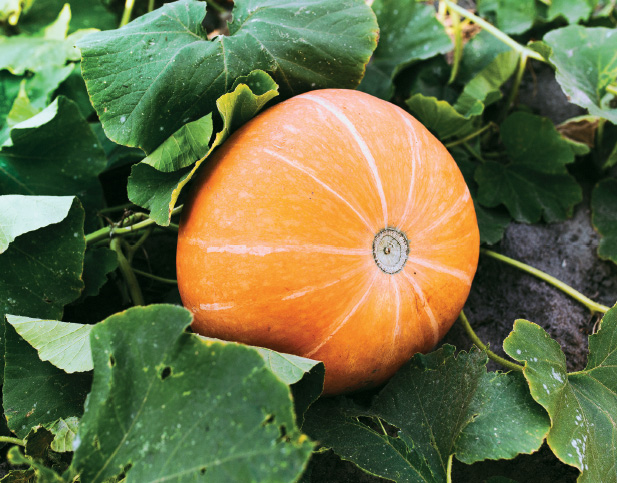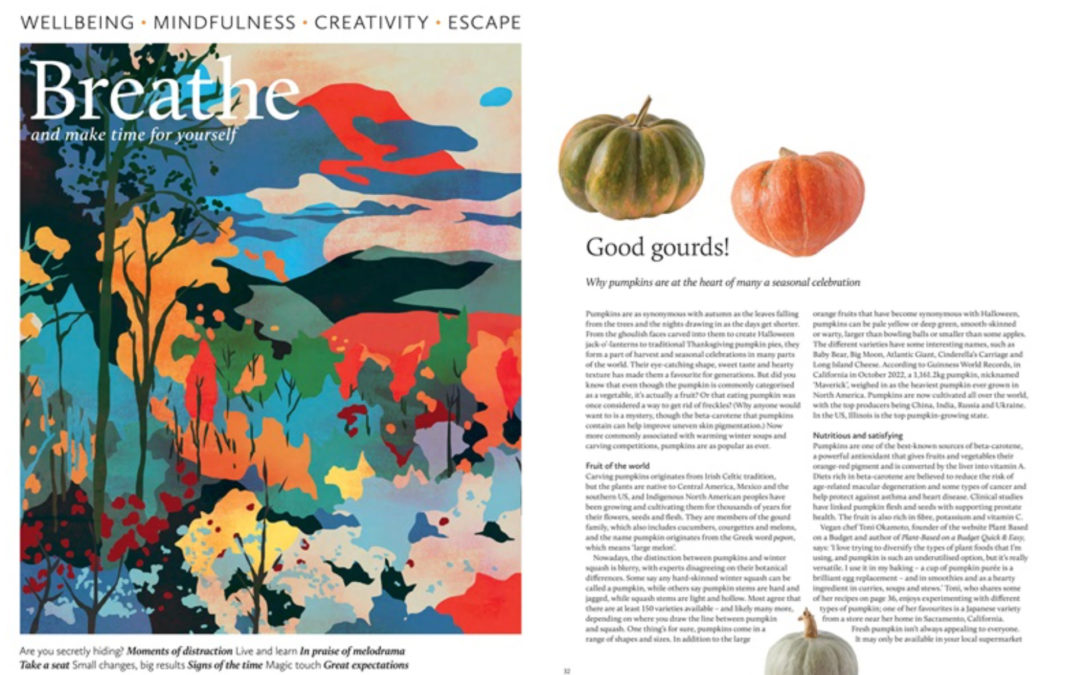
Interview with Cerridwen Fallingstar from The Breathe Magazine, October 2023
Good gourds!
Why pumpkins are at the heart of many a seasonal celebration
Pumpkins are as synonymous with autumn as the leaves falling from the trees and the nights drawing in as the days get shorter. From the ghoulish faces carved into them to create Halloween jack-o’-lanterns to traditional Thanksgiving pumpkin pies, they form a part of harvest and seasonal celebrations in many parts of the world. Their eye-catching shape, sweet taste and hearty texture has made them a favourite for generations. But did you know that even though the pumpkin is commonly categorised as a vegetable, it’s actually a fruit? Or that eating pumpkin was once considered a way to get rid of freckles? (Why anyone would want to is a mystery, though the beta-carotene that pumpkins contain can help improve uneven skin pigmentation.) Now more commonly associated with warming winter soups and carving competitions, pumpkins are as popular as ever.
Fruit of the world Carving pumpkins originates from Irish Celtic tradition, but the plants are native to Central America, Mexico and the southern US, and Indigenous North American peoples have been growing and cultivating them for thousands of years for their flowers, seeds and flesh. They are members of the gourd family, which also includes cucumbers, courgettes and melons, and the name pumpkin originates from the Greek word pepon, which means ‘large melon’.
Nowadays, the distinction between pumpkins and winter squash is blurry, with experts disagreeing on their botanical differences. Some say any hard-skinned winter squash can be called a pumpkin, while others say pumpkin stems are hard and jagged, while squash stems are light and hollow. Most agree that there are at least 150 varieties available – and likely many more, depending on where you draw the line between pumpkin and squash. One thing’s for sure, pumpkins come in a range of shapes and sizes. In addition to the large orange fruits that have become synonymous with Halloween, pumpkins can be pale yellow or deep green, smooth-skinned or warty, larger than bowling balls or smaller than some apples. The different varieties have some interesting names, such as Baby Bear, Big Moon, Atlantic Giant, Cinderella’s Carriage and Long Island Cheese. According to Guinness World Records, in California in October 2022, a 1,161.2kg pumpkin, nicknamed ‘Maverick’, weighed in as the heaviest pumpkin ever grown in North America. Pumpkins are now cultivated all over the world, with the top producers being China, India, Russia and Ukraine. In the US, Illinois is the top pumpkin-growing state.




Nutritious and satisfying Pumpkins are one of the best-known sources of beta-carotene, a powerful antioxidant that gives fruits and vegetables their orange-red pigment and is converted by the liver into vitamin A. Diets rich in beta-carotene are believed to reduce the risk of age-related macular degeneration and some types of cancer and help protect against asthma and heart disease. Clinical studies have linked pumpkin flesh and seeds with supporting prostate health. The fruit is also rich in fibre, potassium and vitamin C.
Vegan chef Toni Okamoto, founder of the website Plant Based on a Budget and author of Plant-Based on a Budget Quick & Easy, says: ‘I love trying to diversify the types of plant foods that I’m using, and pumpkin is such an underutilised option, but it’s really versatile. I use it in my baking – a cup of pumpkin purée is a brilliant egg replacement – and in smoothies and as a hearty ingredient in curries, soups and stews.’ Toni, who shares some of her recipes on page 36, enjoys experimenting with different types of pumpkin; one of her favourites is a Japanese variety from a store near her home in Sacramento, California.
Fresh pumpkin isn’t always appealing to everyone. It may only be available in your local supermarket or greengrocer at certain times of year, and some people find peeling and chopping harder-skinned produce daunting. ‘I have a tip for that,’ says Toni. ‘Wash your pumpkin, then put the whole thing in the oven to roast for around 45 minutes, or until the flesh feels soft to a fork. It’ll be much easier to chop and the peel just slips right off.’ Toni also points out that you can buy chef’s gloves to protect your fingers from sharp knives in the kitchen. Canned pumpkin is another alternative, as it’s ready-puréed for use in pumpkin pie and soup recipes. It’s worth checking the ingredients, though, as some brands add sugars and syrups that you might prefer to avoid.
Every year, it’s estimated that millions of pumpkins are thrown away after being carved for Halloween. This is a real shame and unnecessary. ‘Even the seeds are so easy to use,’ says Toni. ‘Just wash them, dry them really thoroughly, then roast them with salt, nutritional yeast or a spice blend.’
Celebratory icon Every October, grinning jack-o’-lanterns appear on doorsteps in many parts of the world as part of Halloween celebrations. The practice originates from the Celtic festival of Samhain, observed between 31 October and 1 November. Cerridwen Fallingstar, from California, is a witch, a teacher and author of Broth from the Cauldron: A Wisdom Journey through Everyday Magic. She says: ‘In ancient Celtic countries, such as Scotland and Ireland, people wanted to remember their dead around Samhain, which literally means summer’s end. It was believed to be a time when the boundary between the worlds of the living and the dead was especially weak and people left out offerings of food for their deceased loved ones.’ The early Celts, as far back as 1,000BCE, had a tradition of digging up their dead and setting their skulls on a shelf inside a burial mound. ‘On Samhain, people would enter the mound and light a candle inside the skulls,’ says Cerridwen. ‘The light would flicker and the people present would talk to their ancestors.’
Light against the dark However, while people welcomed contact with the spirits of people they loved, they feared the more evil spirits that they believed had also risen, so they sought protection against them in the form of light. A jack-o-lantern is simply a lantern made out of a root vegetable or pumpkin – and the first jack-o-lanterns were carved from turnips. ‘As the Samhain celebration evolved and people no longer kept the skulls of their ancestors, they took to carving skull-like faces into large turnips and setting a candle to burn inside – to welcome the spirits of their loved ones but frighten other supernatural creatures away,’ says Cerridwen.
When Europeans, including the Irish, emigrated to America, they discovered pumpkins and began using them as lanterns. ‘They were large, easy to carve and cast a benevolent light,’ says Cerridwen. But in order to make a custom that originated in paganism more palatable to the early Christians, the myth of Stingy Jack evolved. According to folklore, Jack was a man who made a deal with the devil. After he died, he wasn’t admitted into either heaven or hell – instead, the devil sent him out to roam the world for eternity with just a lump of coal to light his way. Cerridwen adds: ‘The story goes that Jack lit the coal, put it into a hollowed-out turnip, and became known as Jack of the Lantern – or Jack-o-Lantern.’
As well as being carved to celebrate Halloween, pumpkins also play a starring role in the US holiday Thanksgiving, which is celebrated on the fourth Thursday in November. The first Thanksgiving is widely acknowledged to have been held in New England, between the Wampanoag people and Plymouth colonists, to celebrate a successful harvest in 1621. As pumpkins were a crop cultivated by Indigenous Americans, it’s thought very likely that they were offered as part of harvest celebration gifts. Pumpkin pie is now a staple of the traditional Thanksgiving meal, with recipes appearing in English and American cookbooks as far back as the late 1700s.
Words: Jade Beecroft
For more on Toni, visit plantbasedonabudget.com or @plantbasedonabudget. For information on Cerridwen’s work, visit theheartofthefire.com
PHOTOGRAPHS: SHUTTERSTOCK.COM
